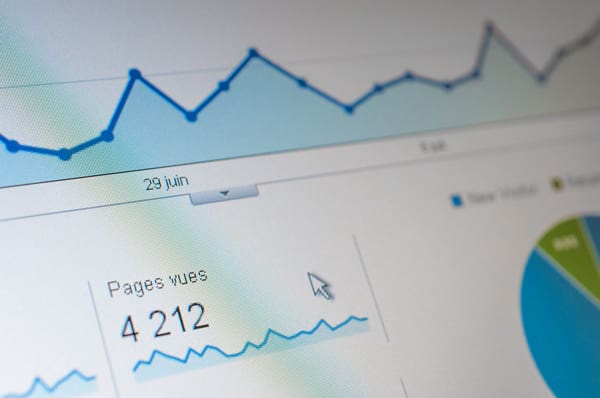What is an E-commerce Scraper?
An E-commerce Scraper is a data collecting tool that helps you understand the market trend and your competitors’ marketing strategies. If you haven’t had one for your business or you don’t see the value of it, this article can help you understand why you need one.
By the end of 2020, global e-commerce sales will reach $4.2 billion and make up 16% of total retail sales. That means the online retailing business is lucrative but the competition is tougher than last year. In spite of the easy entry to the online marketplace, every day each category has new brands coming into the battlefield ceaselessly.
To ensure you won’t be driven out of the business by your competitors or to outcompete your contestants, it is more important than ever to have your eye on your industry trends and competitors’ moves. To make yourself fully armed for the fiercer battle, you’ll need an E-commerce Scraper.
What Can An E-commerce Scraper Do?
As a tool, E-commerce scraper is useless if you don’t use it properly. It’s a tool that can help you scrape e-commerce data from the Internet without coding skill sets. That’s it. For example, putting products on Amazon doesn’t make your business prospering. What makes your business grow is the tactics you use to bring in traffic and the methods you use to convert a visitor to a customer.
What kind of insights you can gain from the extracted data is essential. You can use an e-commerce scraper to monitor the product pricing, advertising placements, and organic reach of your competitors. These moves will make your company more agile in dealing with the ups and downs of your industry. Additionally, it provides you with a trove of high-value data that you can use to inform your own pricing and marketing strategies.
If you’re at the beginning of using e-commerce scraper, here are some examples to give you inspiration on how this tool can help you.
Competitor Monitoring
Price is always the first aspect that influences most customers’ decision-making inclination. It is necessary for online shoppers to appear at a competitive price when people search for a product that you’re selling. To make this work, you have to know how E-commerce platforms such as Amazon, eBay, Shopify, etc, recommend your products to users based on your SEO and PPC, and users’ buying habits and in-App behavior.
Let’s say you are an Amazon running shoe seller. When a user searches for a pair of running shoes, he may enter keywords like running shoes outdoors. If you use these keywords for your product, your product may be recommended to this user. But this process is the first for algorithm matching. Next, the algorithm will analyze the buying behaviors of this user. What’s his shipping address, what’s the average money he spends buying shoes, to name a few. Then, the algorithm will come up with a high CTR recommendation based on the statistical weight.
Now think about this question. How to make the algorithm recommend you instead of your competitors? Going for PPC is a good option but it’s also expensive. It’s probably a waste of your money if you don’t know how to do it wisely.
Or you can use an e-commerce scraper to help you to attract your competitors’ potential customers to your store with information existing in their stores. You can win the chance of being recommended to you and your contestants’ target audience by utilizing information such as price, sales, product title, descriptions, images, rating, reviews, shipping details, SKU and stock level, etc.
With these data in hand, you can achieve the following goals:
- Increase margins and sales by adjusting prices at the right time in the right channels.
- Improve your exposure rate by building a more suitable keyword matrix.
- Improve your cost management by using competitor prices as a negotiating ground with suppliers, or review your own overheads cost and production cost.
- Come up with effective pricing strategies, especially during sensitive times such as season-end sales or holiday seasons.
- Study your competitors’ copywriting and product images to find out the most suitable ways to differentiate yourself.
Competitor Social Media Monitoring
Competitor social media monitoring is the act of monitoring social media for information relevant to your competitors’ business. Collecting all the data and details you can from your competitors to make your social marketing better. To do this, you need to analyze data of these dimensions for actionable insights.
- Brand mentions (with or without direct tagging)
- Relevant hashtags (branded and unbranded)
- Post interactions of your competitors’ followers
- General trends that apply to your industry
- Replies of your competitors
- Posts of your competitors
For example, gathering post information of your competitors to find out how they run their social media and what content strategies they’re using. If your competitors are selling women dresses, knowing their tone of promoting, hashtags, product category, keywords, interactions, and images can help you outline their social media marketing strategies and figure out how their moves affect their sales.
Let your contestant make a post to promote his new arrival, after the posting, his sales go up. That means his copy and image match his audience’s desire point. Then you can analyze his content structure and images to find out why his post can convert followers into customers. Besides, you can use an e-commerce scraper to collect all his posts to find out what product he promoted in the past but didn’t achieve the desired results to avoid making the same mistakes.
In short, you can benefit from monitoring your competitors’ social media from:
- Turn your competitors’ customers and followers into yours.
- Make your social media account more attractive than your competitors
- Predict your competitors’ moves and then act before them.
- Analyzing industry trends and responding more quickly.
5 Best Coding-free E-commerce Scrapers
There are a number of off-the-shelf tools that provide powerful insights into the competition within your industry.
1.Octoparse
Octoparse is everything you need for automatic data extraction. Quickly scrape web data without coding and turn web pages into structured data within clicks!
2. VisualScraper
Visual Scraper is a web visual data extraction tool with a user-friendly interface that helps users to extract simple data on the web.
3. ScrapingHub
ScrapingHub Platform is a leading data extraction tool. It excels at building, configuring and running web crawlers, providing up-to-date data along the way.
4. Webhose.io
Webhose.io provides on-demand access to web data feeds anyone can consume. It enables users to get real-time data from crawling online open sources into various and clean formats.
5. 80legs
80legs is a web data extraction tool that allows users to create and run web crawls through its software as a service platform.
If you want to explore more e-commerce scrapers, check this article and take full advantage of it!
Conclusion
Monitoring your competitors is a way of learning from your competitors. What you can learn from them depends on whether you can find insights through their data. Using an e-commerce scraper to extract the first-hand data is proved to be one of the cost-efficient solutions at the moment.
After all, only the first-hand data that allows you to prepare for new threats within your market, to find new sources of revenue and to improve your pricing strategies.




